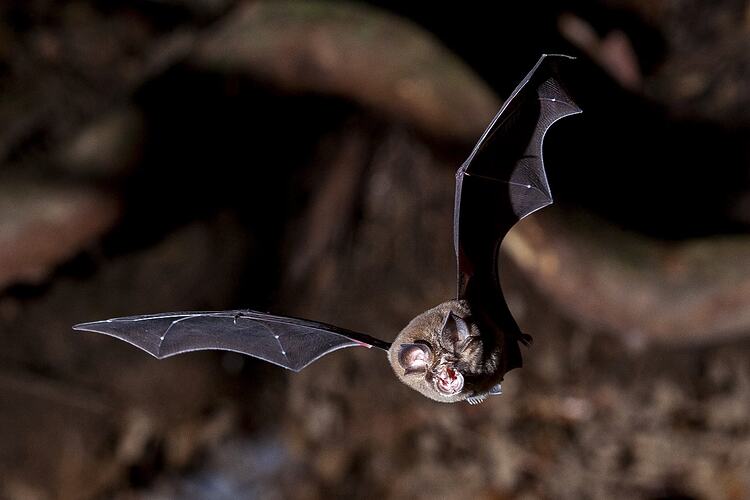General Description
Fur grey-brown on back and paler on belly. In Queensland some individuals have rufus-orange fur. Eyes tiny. Ears long and pointed. Fleshy area around nose (noseleaf) a distinctive horseshoe-shape, pink with grey edge. Body length to 53 mm.
Biology
Eastern Horseshoe Bats fly slowly but are very manoeuvrable and catch insects, usually moths, on the wing or from surfaces (gleaning) within the tree canopy. They form small colonies, usually from ten to fifty individuals but occasionally up to two thousand. In spring females move to a maternity roost to give birth to a single young before rejoining the males in their usual roost. Roosts are usually formed in warm, humid caves or mines and their distribution is largely dependent on the availability of suitable roosts. In the south of their range they become torpid and hibernate over the coldest months. The disintictive horseshoe shaped noseleaf is used for echolocation. Northern and southern populations may be different species. In Victoria the subspecies Rhinolophus megaphyllus megaphyllus is Endangered.
Distribution
Papua New Guinea. Eastern Australia from Cape York to central Victoria.
Habitat
Forested areas with suitable roosting sites in caves or mines.
More Information
-
Animal Type
-
Animal SubType
-
Brief Id
Small grey-brown bat with distinctive horseshoe-shaped nose.
-
Colours
Grey-brown
-
Maximum Size
53 mm
-
Habitats
-
Diet
Insectivore
-
Diet Categories
Insects, Moths
-
Endemicity
-
Commercial
No
-
Conservation Statuses
CITES: Not listed, FFG Threatened List: Endangered, EPBC Act 1999: Not listed, IUCN Red List: Least Concern
-
Taxon Name
-
Common Name
Eastern Horseshoe Bat
-
Other Names
Smaller Horseshoe Bat
-
Kingdom
-
Phylum
-
Subphylum
-
Class
-
Superorder
-
Order
-
Suborder
-
Superfamily
-
Family
-
Genus
-
Species Name
megaphyllus



